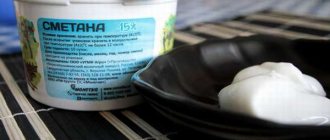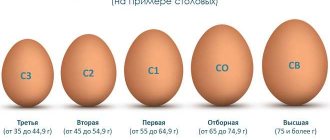Semolina is a wheat product with a grain diameter ranging from 0.25 to 0.75 mm . It boils well and is easily absorbed by the body . Semolina is digested in the lower intestine, so it is useful for diseases of the gastrointestinal tract. Cereals serve as a source of useful minerals: magnesium, calcium, potassium, zinc, iron, phosphorus, etc.
Semolina is considered a product with a long shelf life . In order for the product to retain its quality for as long as possible, it should be provided with the conditions regulated by GOST. Otherwise, the cereal loses its friability and deteriorates due to pests or moldy fungi that have settled in it. The cooked dish becomes bitter. In extreme cases, a spoiled product can be restored, but it is better to initially store the cereal correctly at home.
Shelf life of cereals GOST
The rules for storing cereals and their shelf life are regulated by GOST 26791-89. According to this standard, cereals have the following shelf life:
- Semolina – from 7 to 10 months;
- Corn, millet and oatmeal - from six months to 10 months;
- Buckwheat (kernel) – from 15 to 20 months;
- Buckwheat (prodel) – from 14 months to one and a half years;
- Barley – from 9 to 15 months;
- Rice – from 10 to 18 months;
- Peas - from 17 months to two years;
- Pearl barley - from a year to a year and a half;
- Oat flakes and oatmeal – 120 days.
What to do with an expired product?
If the nutritional properties are preserved after the shelf life has expired, it is better not to cook porridge from semolina for children, but to use it for adding to baked goods - together with flour. But if rancidity has already appeared, it cannot even be used as a breading. Fungal spores in old semolina, once in the human body, cause intoxication, digestive disorders and other unpleasant symptoms.
If you hate to throw away the product, you can use it in the garden. Cereals will help get rid of ants. To do this, sprinkle semolina around the anthill and the path. Insects eat dry grains, and then they swell in the stomach and the pests die. To increase the effectiveness of the bait, mix:
- with sugar - 3:1;
- with jam - 12:1, and then laid out on a horizontal surface to dry and crushed into powder;
- with soda and powdered sugar - 1:1:4.
Those who do not have a summer house will have to dispose of the product, even if a large amount has spoiled. But there is no need to regret it - health is more valuable.
Interesting! Semolina is coarsely ground wheat. The letters on the packaging indicate quality. “M” means that soft grains were used for grinding - it is more suitable for baking. "T" indicates durum wheat. It contains fewer calories and is more suitable for cooking.
Shelf life of semolina
To ensure that semolina remains suitable for consumption for as long as possible, we recommend observing the correct storage conditions, the main ones of which are:
- Storage in a well-ventilated area;
- Humidity no more than 70%;
- Storage temperature no more than + 20 degrees Celsius;
- In order to avoid the appearance of bugs in the cereal, you can put a sheet of foil in the packaging/container.
We recommend buying semolina in transparent packaging. When purchasing, pay attention to the presence or absence of lumps, check its uniformity and flowability. Before long-term storage, be sure to ventilate and dry the product. Remember, semolina is a favorite habitat for flour beetles and moths.
For storage, choose plastic containers for bulk products or bags made of natural canvas.
The total shelf life in summer should not exceed 90 days . In winter, the period increases to 6-8 months .
To store semolina for more than one year, it is enough to keep the product in the oven for 10 minutes at temperatures up to +150 degrees. Don't forget to stir it all the time.
In what container should I store it?
Immediately after purchase, the cereal is poured from the factory packaging into another, more suitable container for storage. But before you throw away the “original” packaging of the product, you should find out all its characteristics, storage recommendations and expiration dates, which the manufacturer must indicate.
The simplest and most reliable method is to store semolina in a dry, tightly closed glass container. The following containers are also suitable:
- plastic container with a lid, marked “for bulk products”;
- a container made of ceramics, earthenware, porcelain with a tight-fitting lid;
- bag made of thick natural canvas.
To prevent pests from attacking the product, the bag is soaked in water with salt (100 g per 1 liter of water). Then dry thoroughly without rinsing.
The salt will repel insects, absorb excess moisture, and the fabric will allow the cereal to “breathe.”
Shelf life of buckwheat
As with semolina, buckwheat is best stored in canvas bags, as well as in special plastic containers or closed glass jars. The storage place for buckwheat is a dry, dark room, isolated from sunlight. In addition to the above, we advise storing buckwheat separately from other foods and spices. Thus, the requirements for the storage location of buckwheat are as follows:
- Place protected from light;
- Temperature from +5 to +15 degrees Celsius;
- Relative air humidity no more than 60%.
Shelf life when unopened is from 8 months ;
In open form - kernels up to 120 days , 90 days, green buckwheat 60 days.
When purchasing, pay attention to the packaging or bag. Factory packaging must be intact, without cracks or other damage. Carefully study the packaging and shelf life of the product.
Buckwheat porridge cooked in water, without any additives, will be suitable for consumption for a week, provided it is stored in the refrigerator in a closed food container. Buckwheat with added oil has a shelf life of 72 hours, with milk – a day.
Types of semolina (by raw material)
From 1997 to this day, raw materials for the production of semolina are classified according to GOST 7022-97:
- M - made from soft varieties of wheat;
- MT – made from a mixture of soft and durum wheat, the content of the latter not exceeding 20%;
- T – semolina is made from durum wheat, otherwise called “durum”.
On the packaging of semolina there is a product label with the corresponding letter.
Whatever type of wheat semolina is made from, the grain should be crumbly and without pronounced lumps. The color of semolina can vary from milky white to yellowish-beige and cream.
Semolina made from durum wheat is healthier: dishes made from such grains have a lower glycemic index than products made from soft wheat.
The GOST mark itself guarantees the quality of grinding and cleaning of cereals.
Shelf life of corn grits
It is recommended to store corn grits:
- In a dark, dry place;
- Storage containers – glass or metal;
- Air humidity – up to 70%;
- At temperatures from -5 to +18 degrees Celsius;
- If the requirements are met, the shelf life is 10 months .
If storage conditions were violated in a warehouse, store or by you, mites, insects and their larvae may appear in the cereal. If infested with insects, the product is considered unfit for consumption.
the finished product within several days .
What happens to semolina over time?
If stored incorrectly, food will spoil. Signs by which you can understand that it’s time to throw away semolina:
- There was a musty smell. Normally it shouldn't be there. Those who are particularly sensitive can detect the sweetish aroma of ground wheat, but no more.
- If lumps appear when shaking, the cereal has become damp.
- The taste has changed - bitterness has appeared. Rarely does anyone taste a raw product; an unpleasant shade is revealed in the finished dish. To prevent this from happening, it is advisable to chew a few grains before cooking or baking.
- Dark spots indicate that there are bugs. And wet lumps are used to colonize the container with food moths.
Over time, the composition of the cereal changes. But despite the fact that dry and clean expired semolina contains much less vitamins and minerals than fresh semolina, it can be eaten. But before you cook the porridge, you should carefully examine and smell it, evaluate its taste properties not only in its raw form, but also in its swollen form. Periodically - at least once a month - you need to pour a small amount of boiling water or milk. If no bitterness appears, you can continue storing it.
Rice cereal expiration date
Unlike other cereals, rice has a fairly long shelf life.
- Thus, white rice, due to grinding and polishing, has a shelf life of 24 months . If the product has been steamed, the period increases to 2.5 years. Do not forget that rice does not like humidity and high air temperatures.
- Boiled rice can be stored for 4 days , provided it is stored in the refrigerator . If necessary, you can leave the cooked rice in the freezer. The shelf life of the product under such conditions will be 8 months.
Where can I store it?
Cereals are afraid of high humidity. Therefore, additional conditions must be created in the closet where it is planned to be placed. To prevent the packaging from becoming damp, you can place bags of silica gel in the corners of the shelves, which are placed in boxes with shoes. Another option is to place garlic cloves or calendula flowers along the shelves in your closet. Insects do not like strong odors.
Attention! To prevent bugs from getting in, place a bay leaf or a piece of foil into the container.
Many housewives believe that it is better to allocate a shelf in the refrigerator for groceries than to throw away food. But according to GOST, in this case it is necessary to maintain the temperature to 5 °C, and in household units it often rises to 8-10 °C. In addition, there are no completely sealed containers, which is why the cereal absorbs foreign odors, which negatively affects its taste.
How to choose semolina suitable for storage
1. The color of a good semolina is rich cream, with 1–3% beige or yellowish inclusions allowed. When shaking, there should be no lumps, the mass should be uniformly free-flowing.
2. If you buy bulk cereals, then the only way to make sure that they are not moldy is to taste and smell: they should not contain bitterness, sourness or mustiness. But even in this case, there is no guarantee that the semolina is not excessively wet, so mandatory ventilation and drying are necessary before storing.
3. The main threat to any cereal, including semolina, is pests. Their presence can be determined when semolina is packaged in transparent polyethylene: examine the bag, carefully pouring the contents inside, but most carefully examine its bottom - this is where dead bugs and their metabolic products most often settle. If on the bottom there is a stripe of a darker color than the semolina itself, do not buy it - the cereal is contaminated.
4. If you buy semolina at retail, then before paying, also carefully examine the package - there will, of course, not be a stable dark stripe at the bottom, but the main attention will need to be directed to the contents of the grind itself. Black or brown dots in semolina are the remains of pests, and this product should not be purchased.
It is important to know that semolina is produced under different brands: “M” is made from soft grains and is more suitable for use in baking, and “T” (which, by the way, has less calories) is preferable for cooking.
How long can oatmeal be stored without refrigeration?
Store porridge in water without butter or with vegetable oil for up to 3 days in the refrigerator, but loss of the original taste is inevitable. Any oatmeal without refrigeration will become tasteless after a couple of hours at room temperature.
Interesting materials:
How to save tasteless borscht? How to save eye shadow without alcohol? How to save a dried rose in a pot? How to Speedrun in HL 2? How to write off bonuses at rendezvous? How to hide a contact on WhatsApp? How to deflate a rubber ball without a needle? How do you become a ship captain? How to become a partner of Wildberries 2022? How to light a candle for the health of your enemies?











